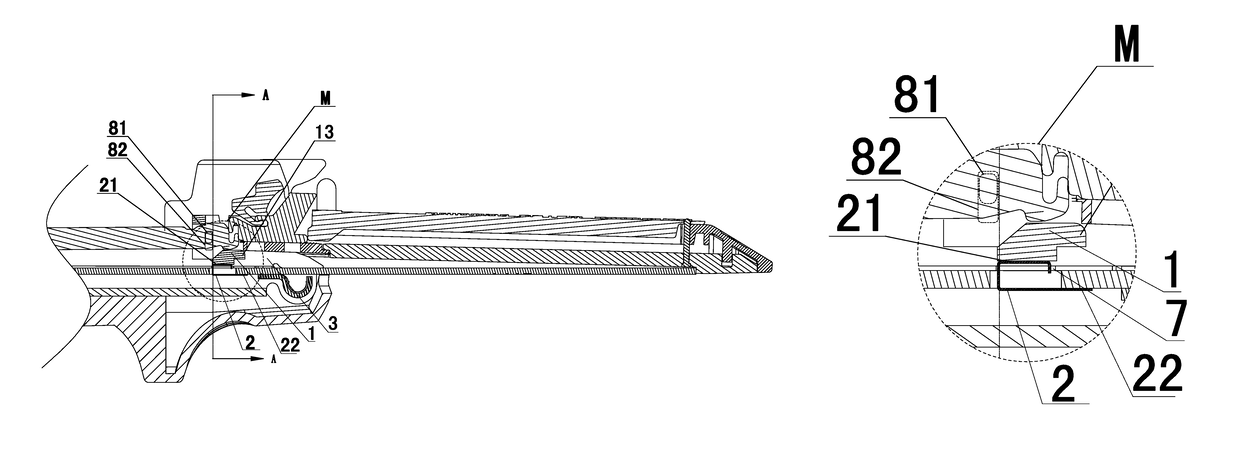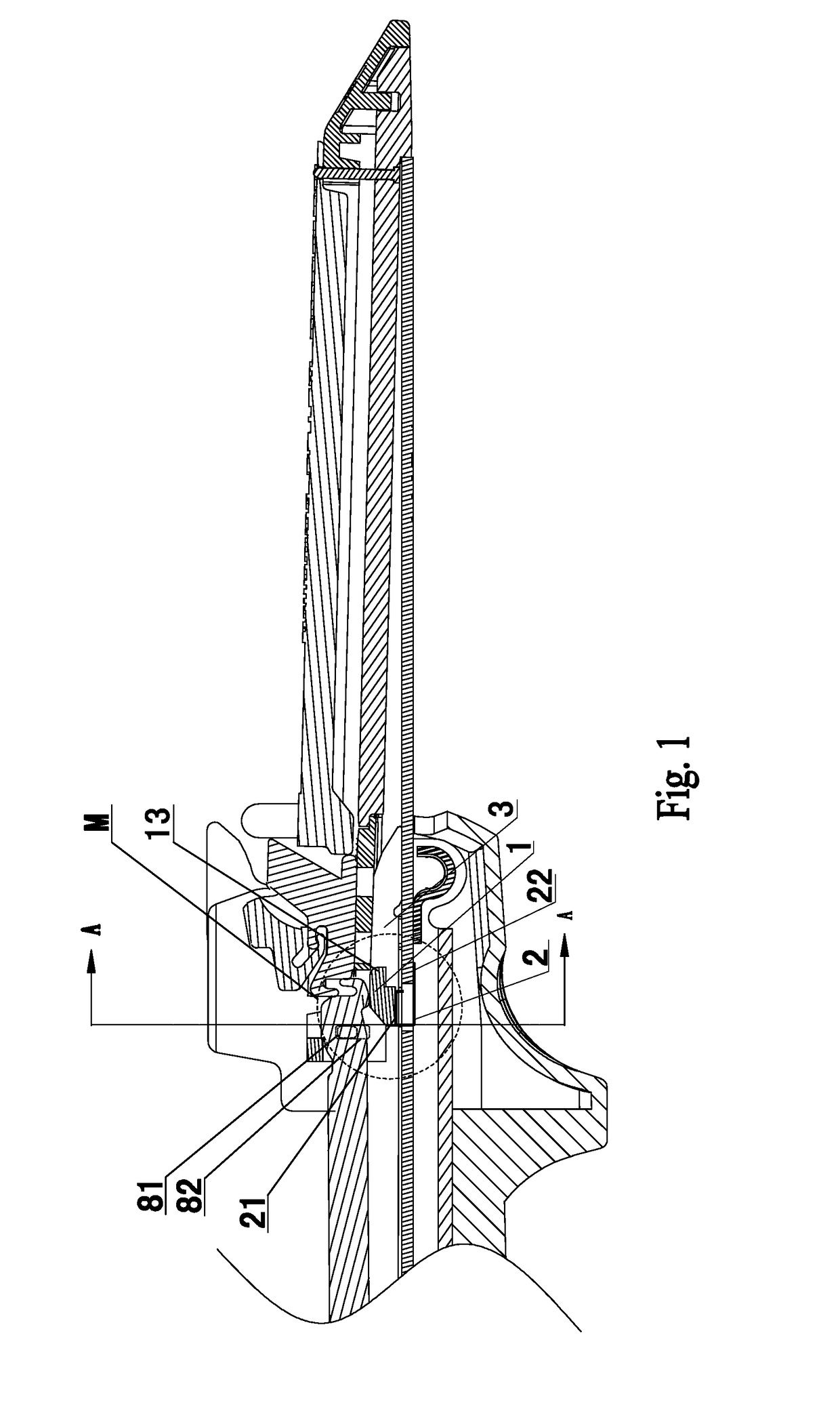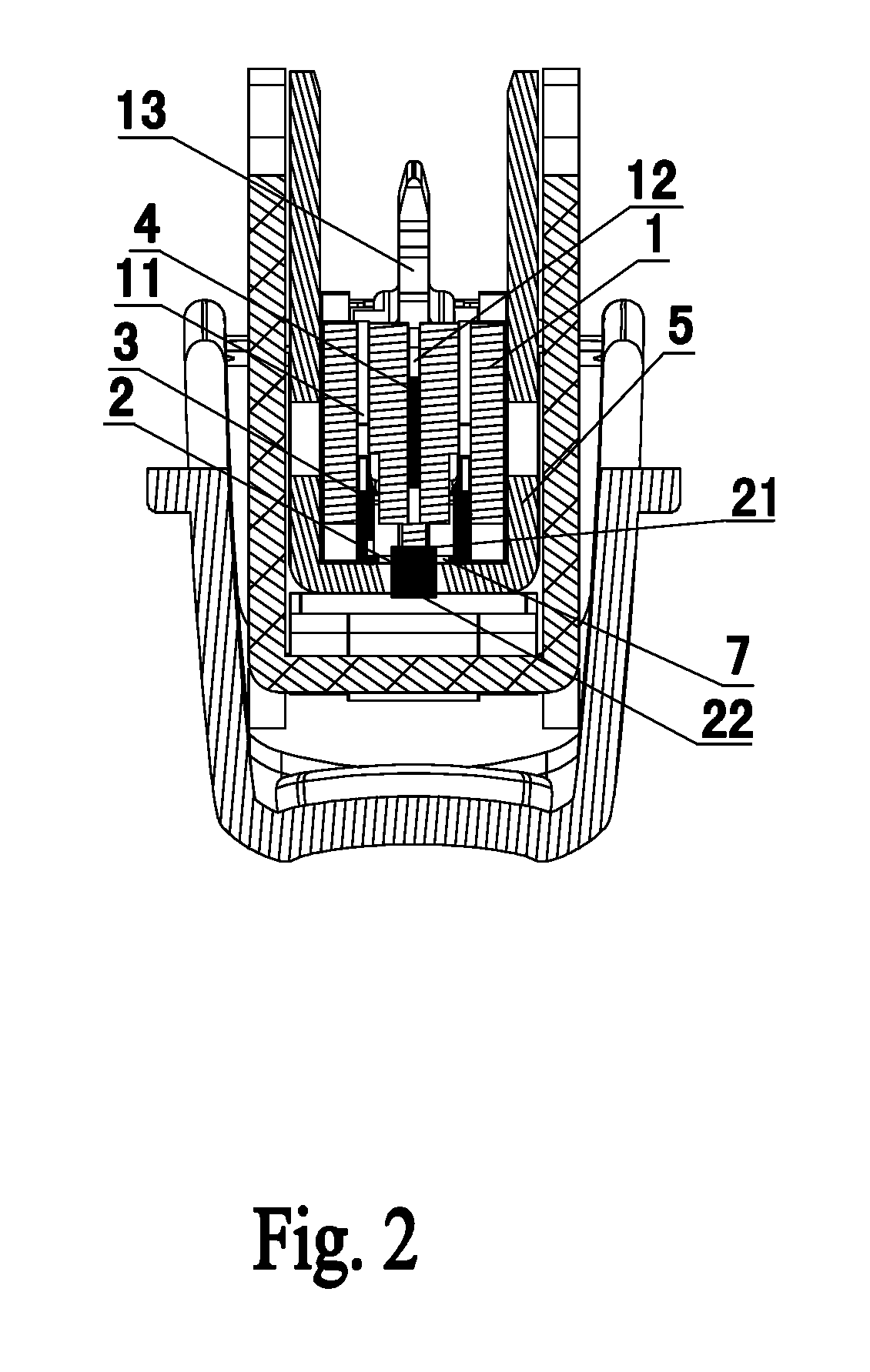Linear cutting stapler
a stapler and line cutting technology, applied in the field of medical instruments, can solve the problems of high cost, complicated structure, difficult manufacturing and assembly, etc., and achieve the effect of simple structure, safe and reliable, and easy manufacturing
- Summary
- Abstract
- Description
- Claims
- Application Information
AI Technical Summary
Benefits of technology
Problems solved by technology
Method used
Image
Examples
first embodiment
[0037]As shown in FIGS. 1 to 4, 9 and 10, in the present application, the linear cutting stapler includes: an upper jaw, a U-shaped lower jaw 5; a staple pushing bar 3 and a cutter pushing bar 4 slidably arranged in the lower jaw 5; a safety mechanism including a leaf spring 2 and a floating block 1, with the bottom end 22 of the leaf spring 2 being welded to the center of the inner wall of the lower jaw 5 and the floating block 1 being connected to the top end 21 of the leaf spring 2. A first through slot 11 and a second through slot 12 for the staple pushing bar 3 and the cutter pushing bar 4 to pass through respectively are provided on the floating block 1 in an axial direction of the floating block 1. A notch 7 to be engaged with the top end 21 of the leaf spring 2 is provided at the center of the bottom surface of the staple pushing bar 3. A protrusion 13 to be pressed by the staple cartridge 51 is provided at a distal end of the floating block 1. A protrusion 81 is provided on...
second embodiment
[0039]As shown in FIGS. 5 to 8, in the present embodiment, the proximal end of the floating block 1 is provided with a protrusion 13 to be pressed by the staple anvil 6. Since other structures are the same as those in the first embodiment, the descriptions of those structures are not repeated here.
[0040]The principle of operation of the present embodiment is described below. When the linear cutting stapler is not opened or the staple cartridge 51 not mounted, the floating block 1 floats upwards under the action of the leaf spring 2, and then the leaf spring 2 is engaged in the notch 7 of the bottom surface of the staple pushing bar 3, so that the staple pushing bar 3 cannot be pushed forwards, and thus the safety mechanism is activated. When the staple cartridge 51 is mounted to the lower jaw 5, and the upper jaw and the lower jaw are closed, the staple anvil 6 presses the protrusion 13, so that the floating block 1 forces the leaf spring 2 to move downwards. Then, the floating bloc...
third embodiment
[0041]As shown in FIGS. 11 to 14, in the present embodiment, the engaging member is an engaging block 9 to be engaged with the notch 7. And the bottom end of the engaging block 9 is connected to the bottom surface of the lower jaw 5 by means of a spring 10. The engaging block 9 and the floating block 1 are manufactured integrally. Since other structures are the same as those in the first embodiment, the descriptions of those structures are not repeated here.
[0042]The principle of operation of the present embodiment is described below. When the linear cutting stapler is not opened or the staple cartridge 51 not mounted, the engaging block 9 floats upwards under the action of the spring 10, and the floating block 1 floats upwards as well under the action of the engaging block 9. The top end of the engaging block 9 is engaged in the notch 7 of the bottom surface of the staple pushing bar 3, so that the staple pushing bar 3 cannot be pushed forwards, and thus the safety mechanism is act...
PUM
| Property | Measurement | Unit |
|---|---|---|
| U shape | aaaaa | aaaaa |
| length | aaaaa | aaaaa |
| width | aaaaa | aaaaa |
Abstract
Description
Claims
Application Information
 Login to View More
Login to View More - R&D
- Intellectual Property
- Life Sciences
- Materials
- Tech Scout
- Unparalleled Data Quality
- Higher Quality Content
- 60% Fewer Hallucinations
Browse by: Latest US Patents, China's latest patents, Technical Efficacy Thesaurus, Application Domain, Technology Topic, Popular Technical Reports.
© 2025 PatSnap. All rights reserved.Legal|Privacy policy|Modern Slavery Act Transparency Statement|Sitemap|About US| Contact US: help@patsnap.com



